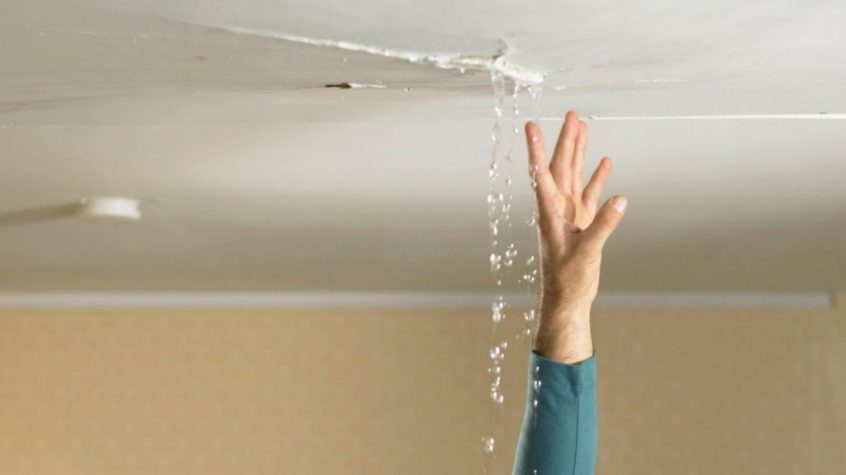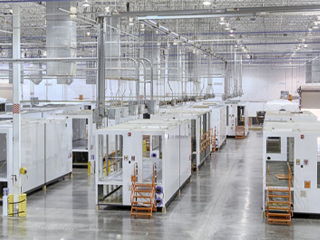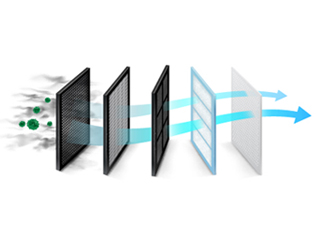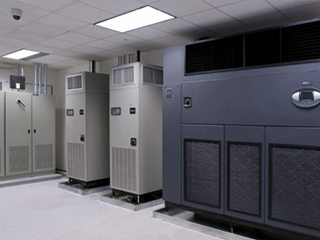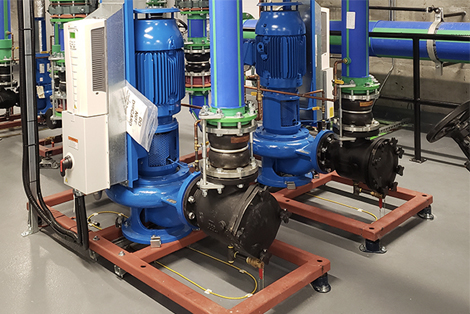A water leak is a major threat to data centers. The presence of water in sensitive areas results in system failure, equipment disruption, and downtime. A study by the Ponemon Institute in 2013 reveals that 24 percent of unplanned outages to data centers are caused by weather, water, heat, or CRAC failure. These unplanned outages significantly impact mission-critical applications such as loss of customers, revenue, and company reputation. On average, this can cost around $5,600 per minute or millions of dollars every year. Therefore, the prevention of early-stage leakage is important for data centers.
Fortunately, there are different ways how to prevent water leakage. Administrators can practice these to avoid huge and costly problems. As a famous saying goes, “Prevention is better than cure”.
Knowing the Causes of Water Leak
The first step in preventing water leakage in data centers is knowing its causes. Taking action without identifying the root cause will lead to a misdirected effort which will only waste your time and money. Many reasons, including unmaintained equipment, structural failure, and weather-related events, can cause water leakage. Specifically, some are:
- Leakage on Air Conditioning – as air conditioning is filled with water, flooding can occur due to its broken water pipe or leaking. If water tanks collecting a unit’s condensation are not maintained, water leakage will also be a risk.
- Water-Cooled Server Rack – though these are used to save electricity, a single leak could damage the data center equipment.
- Broken Water Pipe – IT infrastructure could be destroyed within minutes when water pipes broke. This is caused by frost or clogged sewage pipes. Sprinkler disruption and a toilet overflowing can also happen.
- Heavy Rainfall – Not only may this cause flooding, but water can also enter the window, especially for a poorly constructed server room.
Protecting the Critical Areas
Some data center administrators think that protecting every square foot of the facility is ideal for preventing water leakage. This may work for those who have an unlimited budget. The key to more efficient use of resources is to stop over-protecting. How can you do this? By simply using the appropriate type of water sensors and placing them properly. This allows you to access the threat that will most likely come, thus protecting only the critical areas.
- Proper Placement of Sensors
After identifying the possible root causes, water sensors should be placed close to these areas. For instance, water can potentially puddle at the floor’s lowest point and underneath pipe junctions. A sensor that is placed too high, won’t detect the water until a serious flood has occurred. Therefore, proper placement of water sensors is critical as temperature and humidity are.
Water leak sensors are usually placed near possible water sources such as air conditioning units and water’s point of entry such as windows. The basement is prone to flooding. Thus, it is considered one of the critical areas where water sensors should be placed. Did you know that 98% of the basements are affected by water damage? They are also placed near the equipment to monitor a single drip of water or moisture on its surface.
The proper placement of sensors can protect critical areas. When water sensors are placed incorrectly, they can have inaccurate readings or may give a late alert. All lead to damages to the critical equipment and areas of the data center.
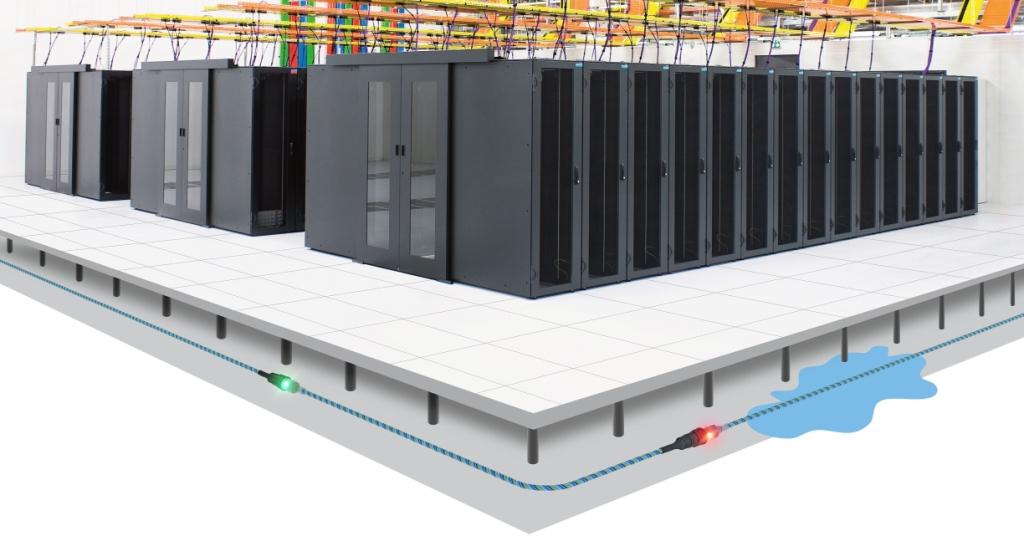
Photo credit: www.ttk.fr
- Types of Sensors to be Used
The type of sensor to be used is another factor that should be considered in protecting the data center’s critical areas. Sensor Cables or Spot detectors? How would you know which one is the best to use in your facility?
Spot detectors are used to find water leaks in specific locations. It will trigger an alert when the liquid reached the two probes which complete the circuit. On the contrary, sensor cables are recommended in identifying leaks for expansive areas with multiple leak points.
Never Assume the Flow of Water
Assuming the source of water without data should not be a practice. This could lead to the administrator’s poor decision-making. Water spot sensors are usually placed close to critical equipment. However, when these sensors detect the water, it may have gone around the data center already.
Liquid detection cables are customizable in length, so they are ideal for larger areas where fluid discharges within the infrastructure. The cable can detect water film from zero height and alert as soon as the cable gets wet. This allows managers to protect larger areas where a leak path may not be easy to predetermine. This is of course at a lower cost. More importantly, it helps in avoiding the difficult and inaccurate assumptions of the direction of water when an intrusion occurs.
Getting Wireless
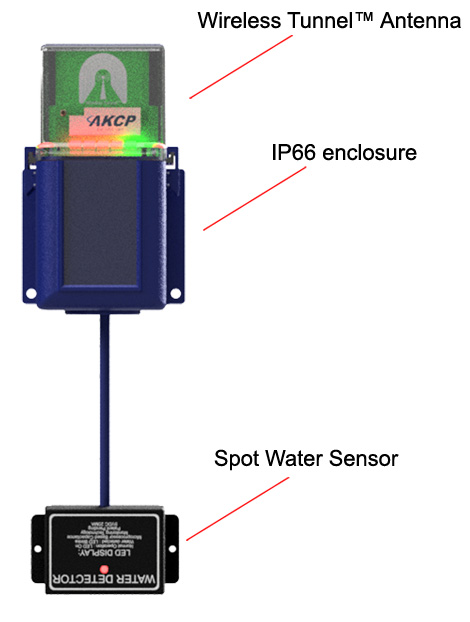
Wireless Water Detector
With the construction works required by wired sensors, running more cables and wires inside the facility is no anymore feasible for data centers. Good thing, wireless sensor technology provides a facility-friendly and cost-effective way of installing sensors. Wireless water sensors can be easily deployed inside the data center to relay data wirelessly back to the base unit. This means less installation time and cost. Moreover, getting wireless results in extended battery life, scalability, increased fault detection, and stronger security. These advantages have attracted modern facility managers to invest in wireless monitoring technology. According to a study, the 2020 market value of the wireless sensors industry is estimated at USD 463.18 million. It also has an anticipated growth of 24.2% by 2026.
Through wireless water sensors, administrators can have more reliable and accurate data. They don’t need too much work and budget anymore to have data relevant to the presence of water.
Training People
People play a critical role in data center management. Conducting regular and comprehensive training for the staff will help you prevent water leakage and its problems. Are the personnel aware of procedures (MOP’s) in performing critical actions to reduce errors such as water leakage? Administrators can minimize water leakage risk if people are trained to manage and maintain the water intrusion on the infrastructure.
However, it should be noted that accidents can be minimized but not completely eliminated. Water leak accidents and other weather-related events are inevitable despite compliance to the MOP. When water sensor alerts, you don’t want your people to stand around and wonder what to do. A standard protocol upon crisis should be implemented for everyone. When it comes to water intrusion, every second counts. Hence, it is important the staff present during a situation can act promptly without waiting for someone to fix the leak.
AKCP Water Detection Sensors
There’s no way in solving a problem before it occurs. But if you are willing to track what is happening at the moment to prevent it, then you are already making a big step. An example is a downtime that is caused by water intrusion that implies serious risks to the organizations’ profitability. These risks can be mitigated by following the practices to prevent water leaks in the data center. Also, performing regular maintenance and testing activities is a must.
There is no good news in discovering a water leak. But water leak sensors will help you catch up and act upon a potential problem. The practices mentioned above can be done using reliable water leak sensors.
Wireless Water Detection Sensor
AKCP offers a Wireless Tunnel radio module with AKCP Spot Water Sensor. It is powered by 5VDC or 12VDC with battery backup and a full IP66 waterproof enclosure. The spot water sensor will alarm when water is detected. With the same technology as the wired spot water detector, it can even detect the presence of de-ionized water.
Locate Rope Water Sensor
The locate rope water sensor will give you a precise location of the water leak so you can respond promptly to protect your enterprise resources from water damage.
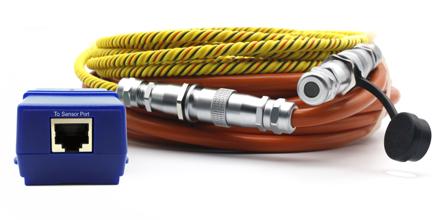
Locate Rope Water Sensor
Ideal for detecting water leaks in hard-to-see areas, such as under-raised floors and false ceilings. The Locate Rope Water sensor will give you a precise location of the water leak so you can respond promptly to protect your enterprise resources from water damage.
This sensor comes fully assembled and includes the rope portion that is the water sensing cable, the non-sensing cable (from the rope to the sensing module), and the main sensing module. The sensing cable can be pre-ordered from a 10-foot minimum to any custom run length (in multiples of 10 feet) of up to 160 feet. The non-sensing cable comes in a standard 20-foot run length.
The specific location of water along the rope can be used to trigger alerts like e-mail, SMS, phone calls, and SNMP traps. The sensor has its own SNMP OID so that it can be monitored over the network using any Network Management System.
Reference Links:
https://www.didactum.com/en/monitoring/water-damage.html
https://www.mordorintelligence.com/industry-reports/wireless-sensors-market
https://www.365datacenters.com/portfolio-items/overcoming-causes-data-center-outages/
https://rletech.com/blog/leak-detection-sensing-cable-spot-detectors-how-are-they-different/

